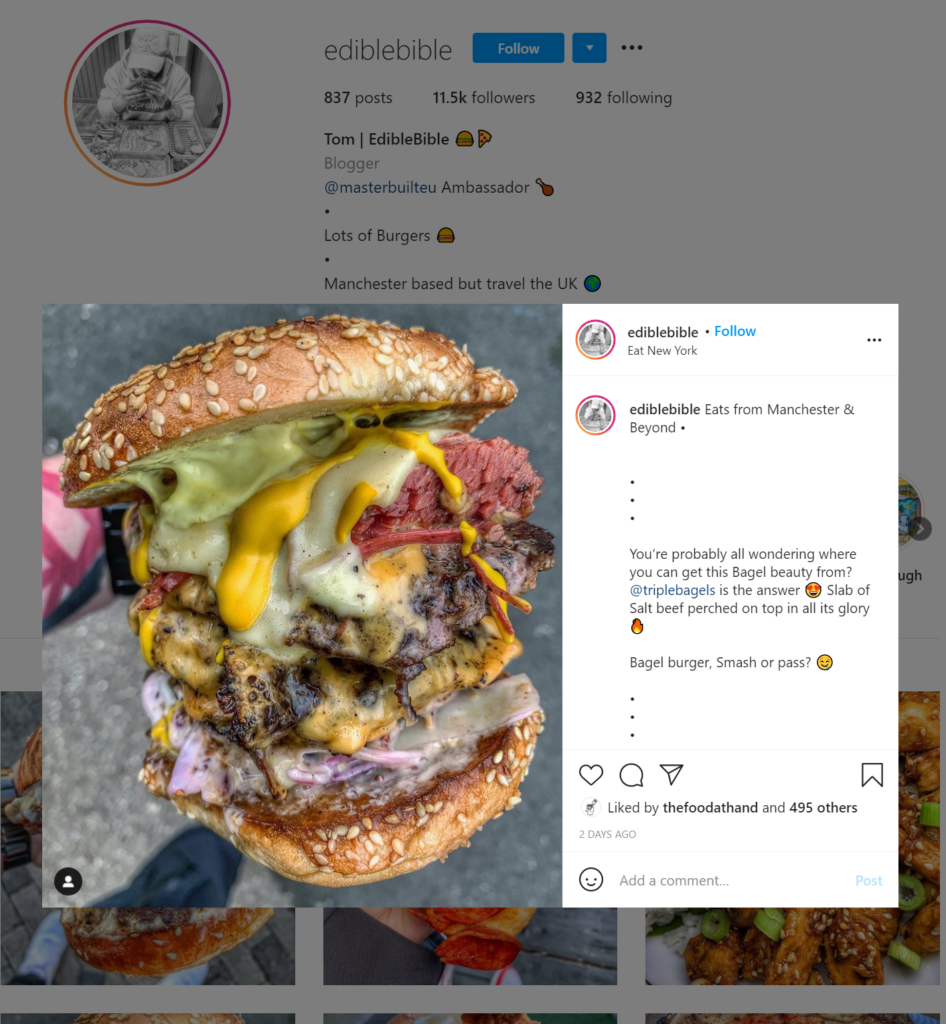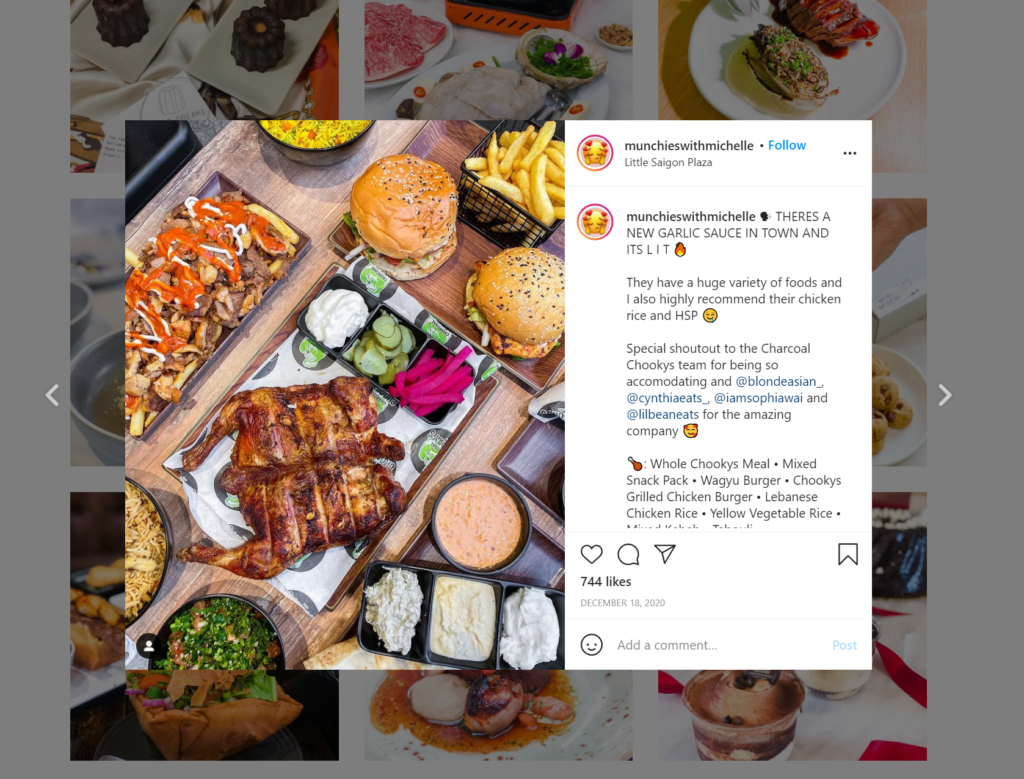How To Be A Foodie Influencer: Becoming A Food Blogger & How It Really Works
Sharing snaps of your delicious food online and getting invites to restaurant openings might sound like a dream job — but what does it take to get to that point?
Becoming a foodie influencer is usually a slow process — it takes time, planning and effort to build up a following and start working with restaurants and food businesses. In this article, we look at what you need to become a food blogger and how it really works.
Set up an Instagram account
Most foodie influencers will focus on Instagram to build up their audience. It’s the best place to share enticing images of food and establish yourself as a food blogger.
To get started you need to come up with a catchy, distinctive name for your Instagram account. It should be something that explains who you are and what you’re doing, and be really easy to remember.
Establish a unique point of view
If you can make your foodie content stand out from the crowd with a different perspective or unique approach, it’ll help you to attract followers. There are thousands of food bloggers already out there, all posting great content — but unfortunately, so much of it ends up looking really similar.
You want to be noticed and provide an insight or angle that people can’t find from other food bloggers.
For example, you could be focused on finding the best vegan food in a specific area. Or you might have moved to a new city, and you can share your experiences of discovering the best places to eat near to you.
It can take time to really pin down what your focus will be, but once you’ve found your angle or point of view, stick with it, and treat it like your brand. Share what your niche or angle is in your Instagram bio and keep it in mind anytime you post. You want to be known for providing the best content in a particular area or niche.
Improve your photography skills
To really stand out as an influencer on Instagram that’s worth following, you need to be sharing amazing photos of the food.
There are plenty of online courses you can take to learn the basics of good photography, and then you just need to practice and practice to improve your photos.
It’s also a good idea to look at the images that other foodie influencers are sharing — this will help you understand what people are interested in and engaged with. You’ll be able to figure out what shots, layouts, and angles work well for different types of food and situations.
When you’re posting — or mapping out your future posts — it’s worth remembering to share a variety of different images so that they don’t look exactly the same as each other.

Image: Instagram
While you don’t need to be a professional photographer, if your photos are out of focus, or just plain average, you can’t expect clients or businesses to pay you as an influencer to promote their food.
It will take time to learn and improve, so try to get your photography skills up to scratch before you start posting — it’s generally better not to post average content just for the sake of posting something.
You also need to be able to write interesting captions that encourage your followers to engage with your posts. Sharing images isn’t just about gaining followers and maintaining your audience, it’s also about demonstrating your skills to potential clients.
Engage with your local food community
Food bloggers are often very engaged with other foodie influencers — so get yourself involved in those conversations! Start following, liking, and commenting on social media posts from other foodies in your local area or that are relevant to your niche.
You should attend local food events, make a point of visiting new openings, bloggers get-togethers and anything that’s relevant to your niche that’s going on. You want to get to know people online and offline that have similar interests, and demonstrate that you’re invested in the food community (plus it’s fun too!).

Image: Instagram
If you show support for others that have similar interests to your own, they will start to interact with your posts and possibly share your content with their established audience.
As you get to know other foodie influencers, you can get together with them and help each other out with getting exciting content, fresh photos or checking out a hot new eatery.
Remember it takes time to build a following
It’s usually a long, slow process building up a significant audience as a foodie influencer. And even when you have thousands of followers, you’ll probably find that it’s tough to actually earn money and make a living from it.
Once you become established and well-known you may get invited to restaurant launches, offered free meals, or sent out food to sample and review — but it’s usually pretty hard-going to set yourself up with paying clients as a foodie influencer.
Most local foodie influencers will still have a day job and treat their food blogging as a side business. To become a full-time foodie influencer, you need to have a huge following and be able to find clients who you can work with on campaigns and promotions for a fee, which small local businesses often don’t have a budget for.
If you’re passionate about great food and want to set yourself up as a foodie influencer, then you need to be prepared to put the work in to build up your following. To become a successful food blogger follow these tips, share great images, and engage with your local food community.
